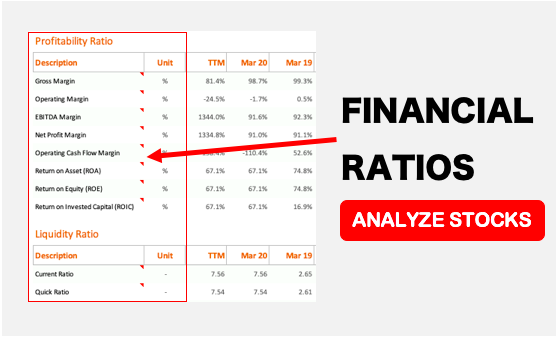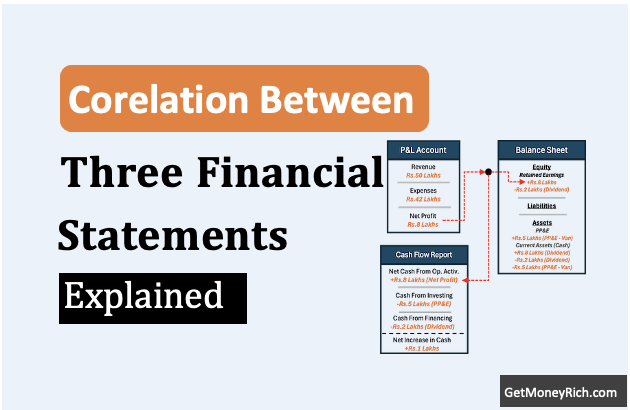I received a message from one of my readers. He wanted to get more clarity about the concept of working capital, and also about the ‘change in working capital.’ He is a person from a manufacturing background hence I thought to explain the topic using a related example.
We’ll try to first understand the concept of Working Capital using a real-life example of a manufacturing company. This company manufactures refractory bricks which are used in the lining of heating equipment like ovens, kilns, furnaces, etc. We’ll take this example to know what be working capital of such a company is. We’ll also look at the concept of change in working capital which is used as a metric in the DCF Model of intrinsic value calculation.
Introduction
To understand working capital clearly, we must first know about the manufacturing process of a typical refractory material. Allow me to give you a quick overview of the refractory manufacturing steps:
Refractory bricks that are used in the lining of heating equipment are used mainly in the metal and cement industry. Big companies that are the main users of refractory are Hindalco, JSW Steel, Tata Steel, Hindustan Zinc, Ultratech Cement, etc.
Heating equipment can be lime kilns, coke ovens, blast furnaces, electric arc furnaces, casters, reheating furnaces, tunnel kilns, shuttle kilns, heat treatment furnaces, etc.
Refractory Manufacturing Process
The most common refractory manufacturing process is the following:
- #1 Crushing & Mixing: Raw materials used to manufacture refractory bricks must first be crushed and screened. Once it is done, they are batched in the required proportions and fed into a mixer machine. Raw materials like bauxite, kyanite, and silica, and fluxes like felspar, are mixed in mixer machines.
- #2. Pressing/Moulding: Once the mixing is done, the mixture is molded in high-capacity hydraulic presses to give the mix the required shape (of a brick).
- #3. Drying: Once the refractory bricks are molded (pressed to shape), they are put in a drying oven to remove the moisture.
- #4. Firing: The dried bricks are then put in a high-temperature kiln to fire the bricks up to about 1450 degrees centigrade.
- #5. Packing & Dispatch: After firing, the bricks are now ready for final use. They are taken to the packing station where they are arranged on pellets and packed and sealed.
- #6. Transportation: Most of the packed goods are transported by roadways or railways to the end customers.
Using this kind of industry as an example, allow me to explain what will constitute the working capital of this company.
Working Capital
Working capital represents the difference between a company’s current assets and current liabilities. In the context of a refractory manufacturing company, let’s break down what would constitute the working capital:

Current Assets:
- Raw Material Inventory: This includes the raw materials like dolomite, magnesia, bauxite, kyanite, silica, and fluxes stored for the production process.
- Work-in-Progress Inventory: Refractory bricks in various stages of the manufacturing process, from mixing, to molding, to drying, to firing, represent work-in-progress (WIP) inventory.
- Finished Goods Inventory: The inventory of the final product (refractory bricks) that is ready for sale and transportation.
- Maintenance, Repair, and Operations (MRO) Inventory: Includes items essential for the day-to-day operations and maintenance (spare parts) of the manufacturing facilities.
- Accounts Receivable: The company may extend credit to customers, so the amount owed to the company by its customers for delivered goods would be part of current assets.
- Cash and Cash Equivalents: The amount of cash held by the company and any short-term investments that can be quickly converted to cash. This also counts as current assets.
Current Liabilities:
- Accounts Payable: The company needs to pay its suppliers for raw materials, electricity bills, and other operational expenses. These are immediate liabilities for the company.
- Short-term Debt: All principal & interest portions of debts that are due for payment in the next 12 months will counted as a current liability.
- Accrued Liabilities: Expenses that have been incurred but not yet paid, such as salaries, wages, and taxes.
In the case of our example company, working capital is crucial for ensuring smooth day-to-day operations. It helps cover the costs associated with the production process, from raw materials to the final product.
Managing working capital effectively is vital to avoid disruptions in the production cycle and maintain a healthy cash flow.
Change in Working Capital
The change in working capital refers to the difference in the company’s net working capital between two periods. It is typically calculated from one accounting period to another. For example, one such account period can be from April’2023 to March’2024 (one financial year).
In the context of our example company, let’s break down how changes in working capital might occur:
Current Asset Side:
- Raw Materials Inventory: If the company increases its purchases of raw materials, it would lead to an increase in the raw materials inventory. This represents a use of cash. More cash is locked as working capital. Alternatively, if the company efficiently uses existing inventory, it could lead to a decrease in raw materials inventory, freeing up cash.
- Work-in-Progress and Finished Goods Inventory: Work-in-progress and finished goods inventory can also lock the cash. For example, increased production might lead to higher work-in-progress and finished goods inventory. Conversely, if the company optimizes its production processes, leading to a reduction in work-in-progress. It can also make more sales leading to a lower finished goods inventory. This would also free up the locked cash.
- Accounts Receivable: If the company extends more credit to customers or experiences delays in receiving payments, accounts receivable will increase. It will increase the current asset hence the working capital. Alternatively, the company can tighten credit terms or improve the collection process. This would reduce accounts receivable (decreasing current assets), freeing up some locked cash.
Current Liabilities Side:
- Accounts Payable: Delayed payments to suppliers can increase accounts payable. It means free cash stays in the bank, meaning higher current assets. If the company accelerates payments to suppliers, it would reduce accounts payable, decreasing the cash balance.
- Accrued Liabilities: An increase in accrued liabilities, representing unpaid expenses, would use up working capital. Conversely, efficiently managing and paying accrued liabilities would free up working capital.
Understanding the change in working capital is essential for assessing a company’s liquidity and short-term financial health.
- A positive change in working capital indicates an increase. It suggests that more funds are tied up in the manufacturing process, such as in inventories and accounts receivable.
- A negative change in working capital implies a decrease. It reflects a release of working capital or a reduction in the funds tied up in current assets. This could be due to efficient payment terms to suppliers or a decrease in investments in current assets.
Example of Change in Working Capital
Imagine a refractory company, “ABC Refractories,” with the following simplified financial situation at the beginning and end of the year:
At the Beginning of the Year (Rs. Lakhs):
- Raw Materials Inventory: ₹50,000
- Work-in-Progress Inventory: ₹30,000
- Finished Goods Inventory: ₹20,000
- MRO Inventory: ₹5,000
- Accounts Receivable: ₹15,000
- Cash: ₹10,000
At the End of the Year (Rs. Lakhs):
- Raw Materials Inventory: ₹60,000
- Work-in-Progress Inventory: ₹25,000
- Finished Goods Inventory: ₹15,000
- MRO Inventory: ₹6,000
- Accounts Receivable: ₹20,000
- Cash: ₹12,000
Change in Working Capital Calculation:
Now, let’s calculate the change in working capital by comparing the current assets at the end of the year with those at the beginning.
- Change in Raw Materials Inventory (Rs. Lakhs):
- End of Year: ₹60,000
- Beginning of Year: ₹50,000
- Change: ₹60,000 – ₹50,000 = ₹10,000 (increase)
- Change in Work-in-Progress Inventory (Rs. Lakhs):
- End of Year: ₹25,000
- Beginning of Year: ₹30,000
- Change: ₹25,000 – ₹30,000 = -₹5,000 (decrease)
- Change in Finished Goods Inventory (Rs. Lakhs):
- End of Year: ₹15,000
- Beginning of Year: ₹20,000
- Change: ₹15,000 – ₹20,000 = -₹5,000 (decrease)
- Change in MRO Inventory (Rs. Lakhs):
- End of Year: ₹6,000
- Beginning of Year: ₹5,000
- Change: ₹6,000 – ₹5,000 = ₹1,000 (increase)
- Change in Accounts Receivable (Rs. Lakhs):
- End of Year: ₹20,000
- Beginning of Year: 15,000
- Change: ₹20,000 ₹- ₹15,000 = ₹5,000 (increase)
Overall Change in Working Capital:
Change in Working Capital=₹10,000−₹5,000-₹5,000+₹1,000+₹5,000 = ₹6,000
Interpretation of the Change in Working Capital
A positive change in working capital of ₹6,000 indicates that more funds are tied up in the manufacturing process. The funds specifically remain tied to the inventories and accounts receivable. This positive change suggests an increased investment in current assets. It could be due to factors such as higher production levels, expanded inventory, or increased credit sales. While positive changes can reflect operational growth, for the company it also means, more cash tied to operations for which no payment has been received from customers.
A negative change in working capital will indicate that fewer funds are tied up in the manufacturing process compared to the previous period. This reduction could be attributed to various factors:
- The company might have streamlined its operations. It leads to lower levels of inventory and accounts receivable. Example: Improved production efficiency resulting in quicker turnover of goods.
- The company may have optimized its cash management. It leads to a decrease in the funds held in current assets. Example: Faster collection of accounts receivable from customers or delayed payments to suppliers.
A negative change in working capital can suggest effective cash management and operational efficiency. But it’s crucial to note that it doesn’t necessarily mean positive financial health on its own. It could also indicate challenges such as reduced sales, a slowdown in production, or delayed payments from customers.
Conclusion
Imagine you’re running a grocery shop. Working capital is like the pocket money you have at your shop to keep things running smoothly. It’s the difference between what you have (your current assets) and what you owe (your current liabilities).
Current assets are things you can quickly turn into cash:
- Cash you have on hand.
- Inventory of items that you sell in your shop.
- Money customers owe you (accounts receivable). For example, these are people who buy things from you on credit and clear dues at once at the end of the week.
Current liabilities are things you need to pay soon:
- The money you owe suppliers of your inventory.
- Upcoming bills for electricity or rent.
Here’s the Working Capital formula:
Working capital = Current assets – Current liabilities
Let’s say you have:
- Cash: ₹9,00,000
- Inventory: ₹50,00,000 worth of items
- Accounts receivable: ₹2,00,000 customers owe you
- Accounts payable: ₹8,00,000 you owe suppliers
Your working capital would be:
- ₹8 Lakhs (cash) + ₹50 Lakhs (inventory) + ₹2 Lakhs (accounts receivable) – ₹8 Lakhs (accounts payable) = ₹52 Lakhs
Positive working capital (like in this example) means you have enough “pocket money” to cover your short-term needs and even grow your business (buy more inventory!). Negative working capital means you might struggle to pay bills on time.
Special Note:
The “change in working capital” is a crucial component in free cash flow calculation. In the free cash flow formula, it is often represented as:
Free Cash Flow = Operating Cash Flow − CapEX − Change in Working Capital
Here’s how it contributes:
- Operating Cash Flow (OCF): The cash generated from core business operations.
- Capital Expenditures (CapEx): Investments in long-term assets.
- Change in Working Capital: Reflects shifts in current assets (like inventory and accounts receivable) and liabilities (like accounts payable).
Positive Change: Implies more cash is tied up, reducing free cash flow.
Negative Change: Suggests funds are released, potentially increasing free cash flow.
Understanding this change is vital. A positive change may indicate business growth, but it ties up cash. A negative change may suggest efficiency, releasing cash. Investors use this insight to gauge a company’s ability to generate free cash and make strategic investment decisions.
Have a happy investing.
Suggested Reading:






